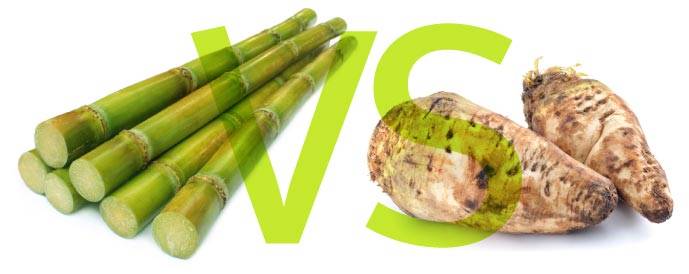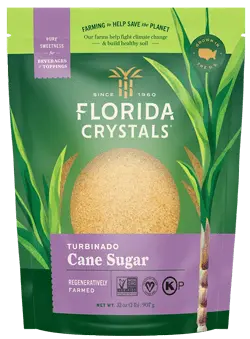Cane Sugar Processing: Traditional Methods and Modern Innovations
Cane Sugar Processing: Traditional Methods and Modern Innovations
Blog Article
Exploring the Comprehensive Steps Associated With Walking Cane Sugar Processing From Harvesting to Improvement
The process of walking stick sugar production includes a collection of intricate steps, starting with the mindful harvesting of sugarcane and culminating in the refinement phases that ensure the final item satisfies industry standards. Each phase, from the removal of juice to the filtration and formation processes, plays a vital duty in identifying the high quality and character of the sugar.
Collecting Sugarcane
Gathering sugarcane is an essential action in the walking cane sugar handling chain, as it straight affects the quality and yield of the end product. Appropriate timing and methods are necessary throughout this stage to make certain optimum sugar web content and decrease losses. Normally, sugarcane is harvested when it gets to maturation, generally 12 to 18 months after growing, identified by a high sucrose concentration.

Post-harvest, the sugarcane needs to be refined quickly to avoid sucrose deterioration. Preferably, gathered walking stick ought to be transferred to processing facilities within 24 hours to preserve sugar high quality. For that reason, efficient logistical planning is crucial to preserve the honesty of the harvested plant throughout the supply chain.
Extraction Process
:max_bytes(150000):strip_icc()/canesugarBURCUATALAYTANKUT-42971cd7f8b84b4fb756984c18728339.jpg)
The smashed walking stick goes through a series of pushing procedures to make best use of juice recuperation. Generally, warm water is sprayed onto the smashed walking cane, producing a countercurrent flow that helps dissolve the sugar while additionally helping in the removal process. The juice collected from this procedure consists of not only sugar but also various natural compounds and pollutants.

To improve removal efficiency, some facilities may utilize diffusion techniques, where the sugarcane is taken in warm water, allowing the soluble sugars to diffuse into the liquid. The resulting juice, rich in sucrose, is after that directed to succeeding handling phases, laying the foundation for filtration and improvement. The extraction process is therefore essential in determining the high quality and return of the last sugar item.
Filtration Methods
The filtration methods used in walking cane sugar handling are vital for transforming the raw juice into a top notch sugar item. These approaches largely intend to eliminate pollutants, such as soil, plant materials, and not natural materials, which can adversely affect the final item's flavor and color.
One of the most common filtration strategies is explanation. This procedure includes adding lime and heat to the raw juice, which helps with the coagulation of impurities. The see this here resulting precipitate is after that eliminated with sedimentation or filtering, yielding a more clear juice. In addition, the usage of phosphoric acid can enhance the clarification procedure by additional binding impurities.
One more significant technique is carbonatation, where carbon dioxide is introduced to the clarified juice. This response produces calcium carbonate, which records staying impurities and advertises their removal.
In addition, triggered carbon treatment may be applied to adsorb any continuing to be colorants and organic contaminations, making sure a more polished product. The mix of these methods successfully More hints prepares the sugar juice for subsequent action in the refining procedure, setting the phase for the production of premium walking cane sugar.
Condensation Approaches
After the purification stage, the following vital action in cane sugar handling entails crystallization techniques, which play a pivotal function in changing the clarified juice into strong sugar. This process usually uses two key methods: spontaneous formation and controlled condensation.
In spontaneous crystallization, supersaturated sugar remedies are enabled to cool down naturally, resulting in the development of sugar crystals with time. This method is less complex yet might result in unequal crystal sizes and reduced pureness degrees. On the other hand, controlled condensation is a much more exact strategy where temperature level, seeding, and focus representatives are diligently managed. This method enables the consistent growth of sugar crystals and higher purity.
During condensation, the cleared up juice is focused via dissipation, raising its sugar web content till it gets to supersaturation. As soon as this point is accomplished, either method can facilitate the crystallization procedure. Cane Sugar Processing. The resultant sugar crystals are after that separated from the remaining syrup through centrifugation
Inevitably, the selection of formation approach influences the high quality, size, and purity of the last sugar item, making this step crucial in the total walking stick sugar processing treatment.
Improvement and Packaging
How can the purity and top quality of walking stick sugar be even more enhanced after formation? The refinement procedure plays a crucial duty in accomplishing check it out top quality cane sugar. Adhering to crystallization, sugar undergoes an extensive washing to get rid of pollutants and recurring molasses. This is usually accomplished using warm water or steam, which aids dissolve and remove unwanted elements while preserving the sugar crystals.
Following, the sugar is subjected to a process called centrifugation, where it is rotated at high speeds to separate the detoxified sugar crystals from the remaining fluid. After centrifugation, the sugar is usually additional improved through a technique called carbonization or phosphatation, which makes use of activated carbon or phosphoric acid to get rid of shade and off-flavors.
Once fine-tuned, the sugar is dried out to attain the desired wetness web content, guaranteeing that it stays secure throughout storage and transportation. The final action involves packaging the refined sugar in impermeable and moisture-proof containers to maintain its top quality and protect against contamination. Cane Sugar Processing. Proper packaging not just expands life span however likewise promotes easy handling and distribution, guaranteeing that consumers get sugar that fulfills the highest standards of purity and high quality
Final Thought
The detailed actions associated with walking cane sugar processing, from the meticulous harvesting of sugarcane to the elaborate refinement and packaging stages, underscore the significance of each phase in guaranteeing top notch sugar manufacturing. Ideal harvesting methods, effective extraction techniques, and rigorous purification procedures jointly add to the last product's purity and stability. The crystallization and succeeding product packaging methods better boost the stability and service life of the sugar, highlighting the complexity and accuracy integral in this crucial agricultural sector.
The procedure of walking stick sugar production encompasses a collection of detailed actions, beginning with the careful harvesting of sugarcane and finishing in the improvement stages that ensure the last product meets industry criteria. Ideally, harvested walking cane must be carried to refining facilities within 24 hours to maintain sugar quality.In spontaneous crystallization, supersaturated sugar options are enabled to cool normally, leading to the formation of sugar crystals over time - Cane Sugar Processing. The improvement procedure plays a vital duty in attaining premium cane sugar.The thorough steps entailed in cane sugar handling, from the careful harvesting of sugarcane to the intricate improvement and product packaging stages, emphasize the significance of each phase in making certain top notch sugar production
Report this page